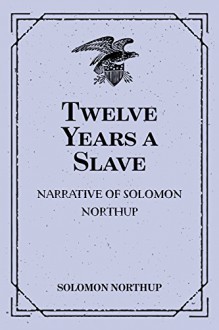In 2013, the release of the critically acclaimed Twelve Years a Slave once again shined the spotlight on slave narratives, and while his had toiled in relative obscurity since the late 19th century, the movie’s depiction of Solomon Northup’s slave narrative pushed him front and center yet again....
show more
In 2013, the release of the critically acclaimed Twelve Years a Slave once again shined the spotlight on slave narratives, and while his had toiled in relative obscurity since the late 19th century, the movie’s depiction of Solomon Northup’s slave narrative pushed him front and center yet again. Northup’s life was quite unique because he was born a free African-American in the state of New York, and he spent the first 33 years of his life living as a free man there. However, in 1841, he was tricked into traveling to Washington, DC with the promise of employment as a violinist, only to be subsequently sold into slavery and forced to work as a slave on a plantation in Louisiana. For 12 years, he endured the plight of being a slave, so when he gained his freedom in 1853, he was well-positioned to write an account that poignantly described the barbaric system of slavery in the Deep South. Northup’s narrative about being a slave for 12 years was popular upon its release in 1853, which coincided with the release of Uncle Tom’s Cabin, and it came to have an important place in the slave literature of the antebellum period, where accounts such as Northup’s helped opened the eyes of northerners to the experiences of slavery. Perhaps not surprisingly, as was the case with Frederick Douglass’ work, Southerners alleged that Northup didn’t actually write the book, or that the entire narrative was made up. However, historians by and large have accepted the narrative’s authenticity, and they have even relied on Northup’s description of certain sites to try to unearth ruins and relics of the past.
show less

